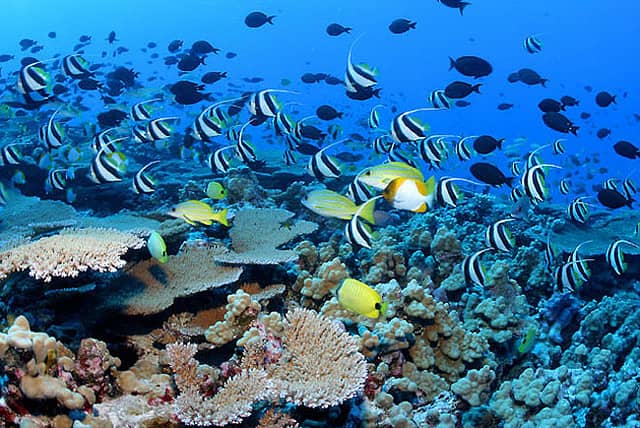More Than 26,000 Fish to Become Fertilizer Following Hawaii Molasses Spill
OutdoorHub Reporters 10.01.13

Officials say that the molasses spill that occurred in Honolulu Harbor earlier this month has resulted in at least 26,000 fish killed so far. The circumstances of the spill are now under investigation by the US Environmental Protection Agency in what many call one of the worst marine disasters in the state’s history.
“They’re going to look at the whole spill incident and try to figure out who played what role and who was responsible for what,” EPA spokesperson Dean Higuchi told the Associated Press.
Hawaii’s largest shipping company, Matson, owned the pipe that spilled over 1,400 tons of molasses into Honolulu Harbor. The resulting mixture created 233,000 gallons of syrupy sugar water, which suffocated marine life. In the warm waters of Hawaii, molasses can be a dangerous element. The thick liquid’s nutritious nature is a boon to harmful algae and bacteria and promotes their growth. When molasses sinks it forces deep-dwelling fish to surface, where they flounder. These fish have already been found dead by the thousands and are now being retrieved for use as fertilizer.
KITV reports that state and federal officials have kept a large amount of dead fish in deep freeze as evidence.
“I’m very surprised by the pufferfish and the moray eels that were in there,” John Tsukada of Island Commodities said as truckloads of dead fish were deposited at his facility. Soon the fish will be rendered into environment-friendly fertilizer for agricultural use. Tsukada said he is happy that at least some good is coming out of the spill, but scientists are worried that the island will not be seeing the end of the molasses for quite some time. Unlike oil, which gathers on the surface of water and can be skimmed off, molasses-enriched water is now coating Honolulu’s seabed. Experts are unsure how long the substance will stay there, but it could be years.

